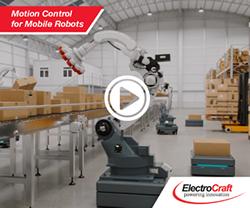US Military Unleashes Swarm of Micro Drones Over California
Why Robotics Will Change Agriculture
2016 Best Year Ever for Funding Robotics Startup Companies
Mining 24 Hours a Day with Robots
Amazon patents system to defend drones against hackers, jammers … and arrows
Upcoming Tradeshow, Conference & Exhibition Summary - February - April 2017
The Aggressively Flying Quadrotor
Robotics Veteran Raises Venture Capital to Build Exoskeleton
LiDAR 101: A Q&A with a Pictometry Expert
An Open Source Driving Agent from comma.ai
Future Drones Will Fly as Silent as Owls, as Steady as Bees
DIY Position Tracking Using HTC Vive's Lighthouse
Was That an Insect or a Drone?
Engineers Devise New Method to Heighten Senses of Soft Robot
Autopilot vs. Autonomous
Records 871 to 885 of 1197
First | Previous | Next | Last
Featured Product

